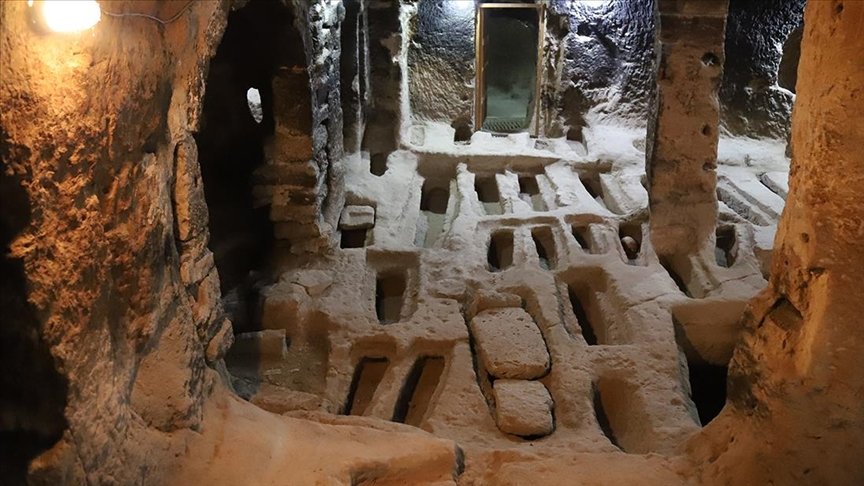AKSARAY, Turkey
The ancient underground city of St. Mercurius in central Turkey impresses visitors with its church and tombs.
The underground city, located in the central Aksaray province’s Saratli town, is home to a total of 35 ancient tombs and a human skull which was found to belong to the wife of St. Mercurius.
St. Mercurius, who was born in the Cappadocia region during the Roman Empire, was a commander who lived in A.D. 225-250.
After declaring he was a Christian, Mercurius was banished to Cappadocia by Roman Emperor Decius and was sheltered in the underground city of St. Mercurius.
The emperor then sent his men to the city to have him and his family executed by decapitation and later buried them in a church in the region.
Meanwhile, the skull of Mercurius was taken to Cairo, the capital of Egypt.
After the time of St. Mercurius, the underground city served as a shelter for early Christians who were running away from the prosecutions of the Romans in the Cappadocia region.
The excavations started in the city in 2011, lasting till 2016. Three floors of the seven-story underground settlement have been cleaned during this work and opened to tourism.
Speaking to Anadolu Agency, Aksaray Museum curator Yusuf Altin said graves in the city attract great attention of local and foreign tourists.
“The most important feature that distinguishes the St. Mercurius underground city from other underground cities is that it has churches and tombs. During our studies, we found that St. Mercurius and his family were buried in these tombs. Tourists visiting the region wonder how these tombs were made,” Altin said.
A Russian tourist, Natali Zakharova, said: “The underground city fascinated me, it has a mystical texture. We were very surprised when we saw the tombs and the skull.”
“I was intrigued by the skull in the tombs. I had a very strange feeling,” another Russian tourist, Marina Katirbolava, told Anadolu Agency.










Discussion about this post